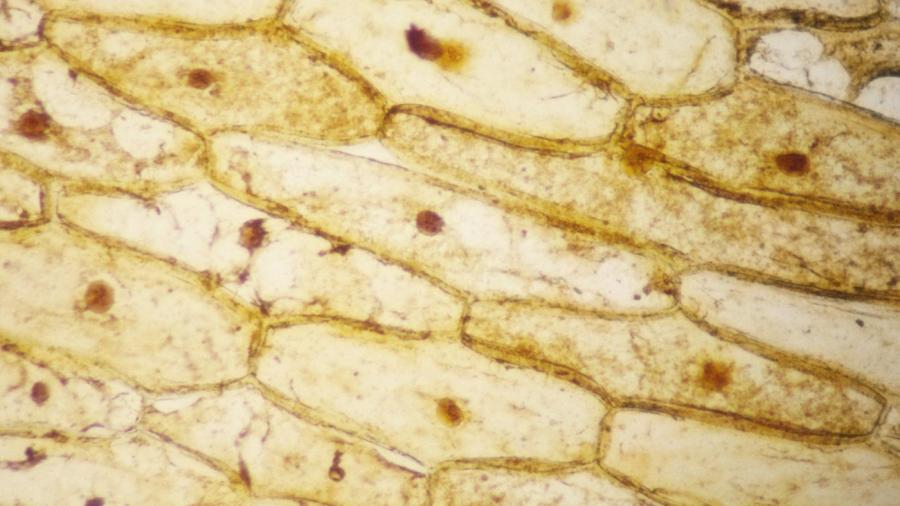Why Is Iodine Stain Used on Onion Cells?

Iodine is often used to stain onion cells before microscopic examination to enhance the visibility of the cells. Many cells, including those of onions and other vegetables, are often transparent. When unstained cells are viewed under a microscope, the light passes directly through the cells’ various structures revealing little to no detail. By contrast, when iodine or other dyes are used, the cell absorbs the dye into its various organelles and structures, which blocks the light and allows the observer’s eye to detect the details of the cell.
Iodine is not the only dye used in microscopic examinations. Iodine, food coloring, malachite green and methylene blue are common and easily accessed dyes. Malachite green and methylene blue are both available at speciality aquarium stores, but iodine and food coloring are available at most drug stores and grocery stores.
Different types of cell structures work better with different dyes. Because of this, scientists can use a dye that is tailored to the specific organelle. Additionally, scientists can use multiple dyes that highlight many different parts of a plant or animal’s cells. Scientists must always exercise care because dyes not only stain cells. They may also stain the hands and skin of the scientists.





